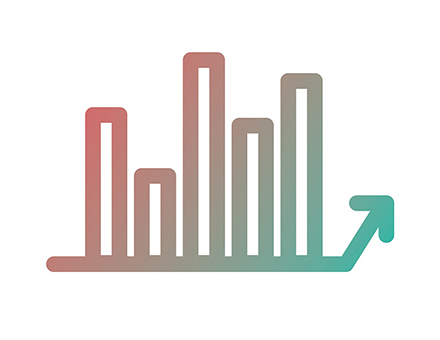SAM Magazine—Winter Park, Colo., June 14, 2022—As post-pandemic demand eases and inflation continues to loom large, lodging properties at 17 mountain destinations across seven western states are recording notable occupancy declines for the first time in nearly two years, according to the latest report from DestiMetrics, the Business Intelligence division of Inntopia.
An aggregated assessment for the upcoming summer months from data compiled through May 31 illustrates that while the average daily rate (ADR) is up over last year—and at historically high levels—occupancy has dropped notably from both last summer and the pre-pandemic summer of 2019.
Summer comparisons. On-the-books occupancy for the six months from May through October is down 5.6 percent compared to last year, and is currently down in four of the six months—most notably a 9.3 percent drop for July and 16.6 percent for August. ADR is up 5.9 percent with increases in all six months, but combined with the lower occupancy, revenues are down 0.1 percent.
Booking pace as of May 31 for arrivals in May through October is down 40.4 percent compared to last year and, more significantly, is down 20.6 percent compared to 2019. These declines have been recorded since last January but have deepened considerably in recent months—including a 50.1 percent year-over-year decline in April.
Why? There are several contributing factors to the cooling trend in booking and occupancy. “Those declines [in occupancy and booking pace] compared to a more stable 2019 indicate that the economic fundamentals have shifted enough to impact the bottom line,” said Tom Foley, senior vice president of Business Intelligence for Inntopia. “And though we’re still seeing room rates at all-time highs, the slackening demand is now long-term and increasing economic pressures are forcing consumers to retreat from high room rates.”
Economic pressures such as high inflation, the rising cost of credit, and declining savings are eroding discretionary dollars, said Foley, which is putting pressure on consumers to be more cautious about extra cash and whether it can be used for travel. “The result is that considerably fewer room nights have been booked for this summer compared to both last year and 2019, and it is unlikely that those higher rates alleviate the revenue decrease caused by lower occupancy,” Foley explained.
“The sustained declines in financial markets have dramatically impacted consumers’ savings, and people who were doing well during the pandemic have lost up to 18 percent of their savings portfolios since Jan. 1, and that is definitely contributing to declines in the booking pace and some downward pressure on rates,” Foley continued, noting that the Dow Jones Industrial Average (DJIA) slipped into a negative year-over-year comparison in late April and remained there throughout May.
What does it all mean? “The industry may have reached a new inflection point where mountain destinations will need to reset their expectations about who is willing and able to travel in the months ahead and how much they can afford to pay compared to the unbridled spending of the past 18 months,” advised Foley.
“Even though the industry is up on revenue compared to 2019,” he added, “that ‘win’ is due to a likely unsustainable room rate when recognizing the new economic realities and easing of demand.”




